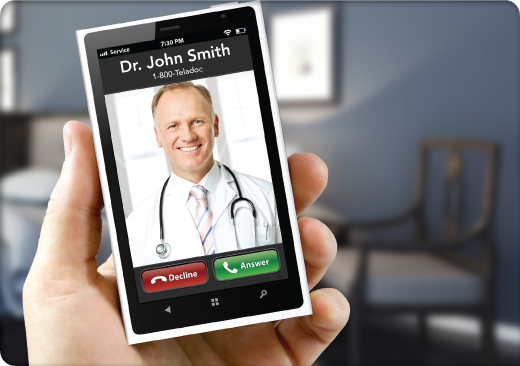You’re sitting at home (or in your office) and you’re just not feeling well. What do you do?
The traditional options are: Wait and see, take your temperature, make note of any other symptoms you have and jump on the internet to diagnosis yourself. If you’re more than a little sick, you might schedule an appointment with your physician (hoping to get in today or tomorrow), run to an urgent care center or make the dreaded trek to the emergency room (where you’ll also be exposed to who-knows-what while waiting 2 or 3 or 4 or more hours to be seen).
These options vary dramatically with regard to convenience, cost, accuracy of diagnosis and likely outcomes.
Today, new options are making their way onto the scene and they’re effectively augmenting the continuum of care through new access points and technologies. The ones most worthy of consideration are:
- Employer-based Health Clinics – These “on-site clinics” are convenient for employees – which can improve early diagnosis and treatment compliance – and reduce time away from work. Some employers also allow family members to access the on-site clinic for routine services. Previously, on-site clinics were only feasible for employers having thousands of employees; but today, a concentration of just 500 employees (working for one employer or several) is enough to financially justify the investment.
- Telehealth – These services enable you to be connected via phone or online video consultation to a board-certified physician 24/7 from the convenience of your home, office, hotel or wherever you happen to be. Telehealth is not a substitute for the regular care of a PCP or treating physician but it is a very effective option for common conditions such as sinus problems, respiratory infection, allergies, urinary tract infection, cold and flu symptoms and many other non-emergency illnesses. Virtually all employers should offer a telehealth service to improve access to care and reduce utilization of more expensive care settings. Teladoc (Teladoc) is our preferred provider given their size, user experience and willingness to share encounter data for effective data integration and care coordination.
- On-site Kiosks – Whereas on-site clinics require significant capital expenditures and clinical staffing, an on-site kiosk is an extension of telehealth that effectively leverages video technology for a virtual “face-to-face” experience with a physician. Kiosk providers such as HealthSpot, include various patient-usable diagnostic tools such as otoscopes and blood pressure cuffs to help the physician make more accurate diagnoses. Set-up and ongoing management costs are a fraction of on-site clinics and the kiosks can be relocated if necessary.
- Self-monitoring Tools – The newest (and, for me, most exciting) tools on the market relate to self-monitoring and include non-invasive, web-enabled devices to measure blood pressure, temperature, blood oxygen, heart rate, glucose levels, weight, protein levels, leukocytes, nitrates, pH and more (see Withings and Scanadu). These devices can be very helpful to physicians in diagnosis and treatment, especially when connected to an integrated data warehouse and channeling system such as Switchbridge.
Ours is an era of rapidly escalating healthcare costs and impending limits to provider access as our over-burdened healthcare system experiences a loss of physicians just as baby boomers and the previously uninsured begin demanding more services. Traditional means of accessing healthcare must be supplemented with new diagnostic and treatment tools. Those employers who integrate these tools while guaranteeing data integrity and integration will control their healthcare costs, improve productivity and create a system that maximizes patient care and outcomes.
Which tools have you implemented or are most likely to consider?





